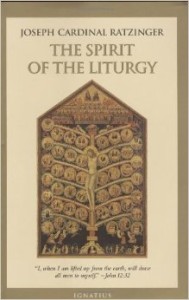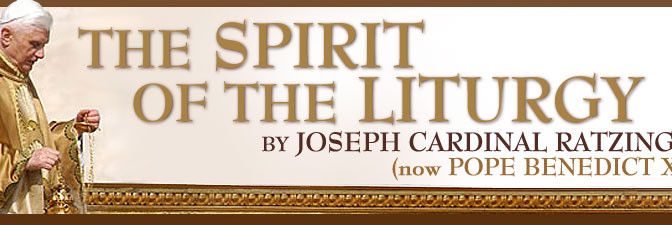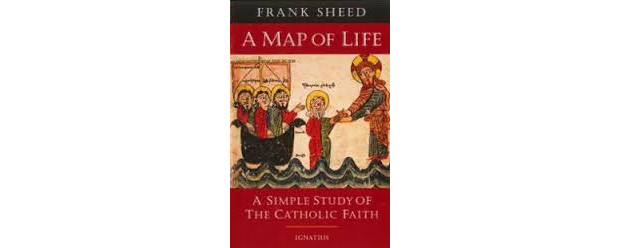 The Spirit of the Liturgy, by Pope Benedict XVI, Joseph Cardinal Ratzinger, Ignatius Press, 2000. Reviewed by Rey Dalisay.
The Spirit of the Liturgy, by Pope Benedict XVI, Joseph Cardinal Ratzinger, Ignatius Press, 2000. Reviewed by Rey Dalisay.
What is the liturgy? What happens during the liturgy? What kind of reality do we encounter there?
So begins Joseph Cardinal Ratzinger’s book The Spirit of the Liturgy. Without a doubt, these questions about the Church’s highest prayer are urgently relevant to the life of Christians today. Misunderstanding them and answering them incorrectly will have a profound impact not just on how we worship the Lord, but also on how we live in the world. Indeed, in the 50 years since the Second Vatican Council, it has become clear that it’s no coincidence that improper liturgical expression has gone together with a loosening of faith and morals. With this book, Ratzinger sought to help us rediscover the liturgy in all its beauty and its place in the universe, and thereby helping us recover our understanding of our relationship with God.
Those first questions capture the central themes of the book, which Cardinal Ratzinger wrote in a non-official capacity several years before he became Pope Benedict XVI. It’s non-official in that the book contains his personal thoughts, and should not be treated as magisterial Church teaching, especially in light of the Cardinal’s position at the time as the Prefect of the Congregation for the Doctrine of the Faith (CDF). At the same time, however, the book does not contradict Catholic teaching. Certainly, it would have been outrageous if the Prefect of the CDF had written a book promoting heresy!
Writing for a non-scholarly audience, Ratzinger writes in his trademark, beautifully worded style, drawing heavily on Scripture and academic sources in a way that keeps readers engaged without compromising the depth and clarity of the content. If we were to summarize the book according to questions, the questions would follow this order:
- What is liturgy? Where does it come from? Why do we do it?
- What do worship and sacrifice mean in Christian liturgy?
- Why does liturgy have a timely, seasonal element?
- Should Christmas be celebrated in June in Australia?
- Why are direction and location important in the liturgy?
- Should we all face “east”?
- What is art and music’s place in the liturgy? Why does it matter
- What is “rite”?
- Why is the Zairean form of the Mass legitimate, whereas liturgical dance generally is not?
- What does “active participation” mean?
- How do we express ourselves during the liturgy? Why should we care about our gestures, postures, vocal responses, vestments, and matter?
I included the more-specific questions about Christmas in Australia, facing east, and the Zairean form of Mass to pique prospective readers’ interest. This book is far from a dry and academic treatment with nothing but abstract concepts. To the contrary, it has the right mix of pure theology and practical guidance.
As a whole and within each section, the book is both a presentation and a proposal. Ratzinger explains what the liturgy is and why it is so, as well as arguing for how it should be. In the preface to the book, he likens the liturgy to a fresco that had been preserved but encrusted with whitewash after many centuries. In the twentieth century, the Liturgical Movement and, later and most especially, Vatican II, scraped off that whitewash to reveal the vividness that was underneath. However, having been re-exposed, the fresco soon became subject to climate, reformation, and reconstruction.
In the media and among many Catholics, Ratzinger has often been unfairly characterized as a doctrinal and liturgical ultra-conservative, as someone who rejects any change—even as someone who would prefer to return to the pre-Vatican II Mass. This book, however, reveals otherwise. In fact, Ratzinger was greatly influenced by Fr. Romano Guardini, who had written a much earlier book with the same title, and which called for liturgical reform—or perhaps restoration and renewal are more accurate terms. In Ratzinger’s book, Ratzinger very much favors liturgical development, but in an organic, natural way—as in how a plant grows—and not through artificial and experimental means.
One topic into which I hoped Ratzinger had delved more deeply is on “active participation” (participatio actuosa), that famous and often-disputed phrase used by Vatican II’s Sacrosanctum Concilium. He emphasizes that “active participation” primarily means to unite ourselves, internally, in the prayer of the Mass, most especially the Eucharistic Prayer. External action is secondary to this internal unity in prayer. While I completely agree that unity in prayer must be the central focus of “active participation,” I would have liked to see more guidance on what that means externally, since much of the dispute about that phrase has to do with external actions and who performs those actions.
I highly recommend Joseph Cardinal Ratzinger’s The Spirit of the Liturgy, in particular to “cradle” and “cultural” Catholics who, though they might attend Mass every Sunday, may not have been taught what it really is and why we do it. Learning about the liturgy will help us to worship God the way we ought. Learning about the liturgy will help us, as Christians, to understand where we came from, to persevere in this life from day to day, and to set our goal of joining the saints in the heavenly liturgy.







As a follow-up, i forgot to add a couple of links to excerpts from the book that ignatius press has made available. they’re pretty good teaser-trailers to the book, if you will. one of them is on the altar and the direction of prayer: The Altar and the Direction of Liturgical Prayer and the other is on music: Music and Liturgy.
Thank you for this review! Will definitely read this book!